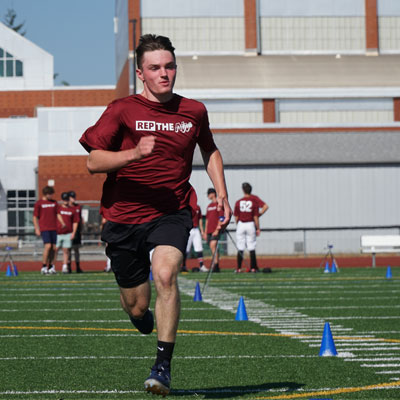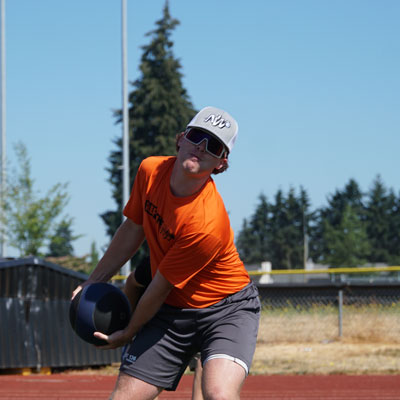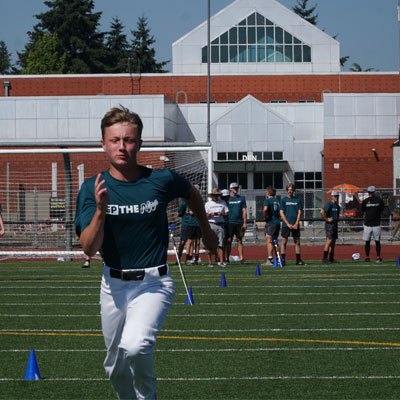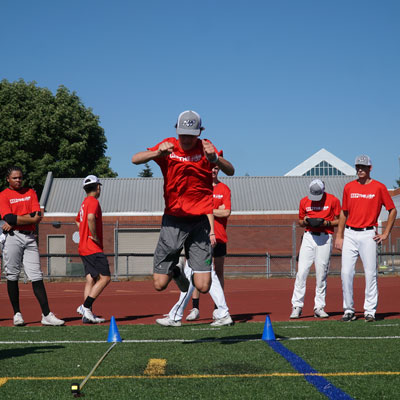The BAR Protocols
Testing Protocol
- Start in a base-stealing stance that is most familiar to you and that you think will yield the best time. Shoulders should be perpendicular to the starting line.
- Counter movements are not permitted. Step on the starting line. Timer will start on first movement.
- As you accelerate, keep your head down, maintain a fast stride frequency, and drive your arms and legs.
- Make sure you run through both the 30 yd and 60 yd dash timing-gate. The clock stops when your chest crosses the finish line.
Measure
This test measures the acceleration of the athlete, and is a reliable indicator of speed, agility and quickness.
Equipment
- Measuring Tape
- Chalk or duct-tape
- Brower timing system
Environment
Preferably on a grass turf, or grass surface that is clean and/or unobstructed.
How to Measure
- Measure 30 yards (90 feet) and 60 yards (180 feet) in the outfield.
- If you are using a stopwatch, the timing starts with the first movement after the set position. Stop the clock when the athlete's chest crosses the finish line.
- The athlete runs the race twice, and his best time is recorded to the nearest two decimals (for example, a time of 4.453 should be recorded as 4.45).
Testing Protocol
- Each player receives two attempts at the Standing Broad Jump.
- Players must start with both feet/toes totally behind start line for valid jump.
- Players may swing arms and bend knees prior to jumping.
- Upon landing, player must maintain control, landing balanced with both feet planted.
- Upon landing player may also fall forward, but not backwards.
- Jumps are measured from heal of the foot nearest to the initial jump line.
- Jumps are measured to the nearest whole inch.
- Results are recorded in total inches jumped.
Measure
This test measures the explosiveness of the athlete, and is a reliable indicator of speed.
Equipment
- Measuring tape
- BAR Cones
Environment
Preferably in a gym or with a solid ground surface.
How to Measure
- Two jump max
Disqualification
Individual jumps are disqualified (not counted) if athlete: (1) falls backward after landing the jump; (2) steps past the line before the jump; or (3) steps into the jump. After first disqualification and allow athlete to redo jump.
Testing Protocol
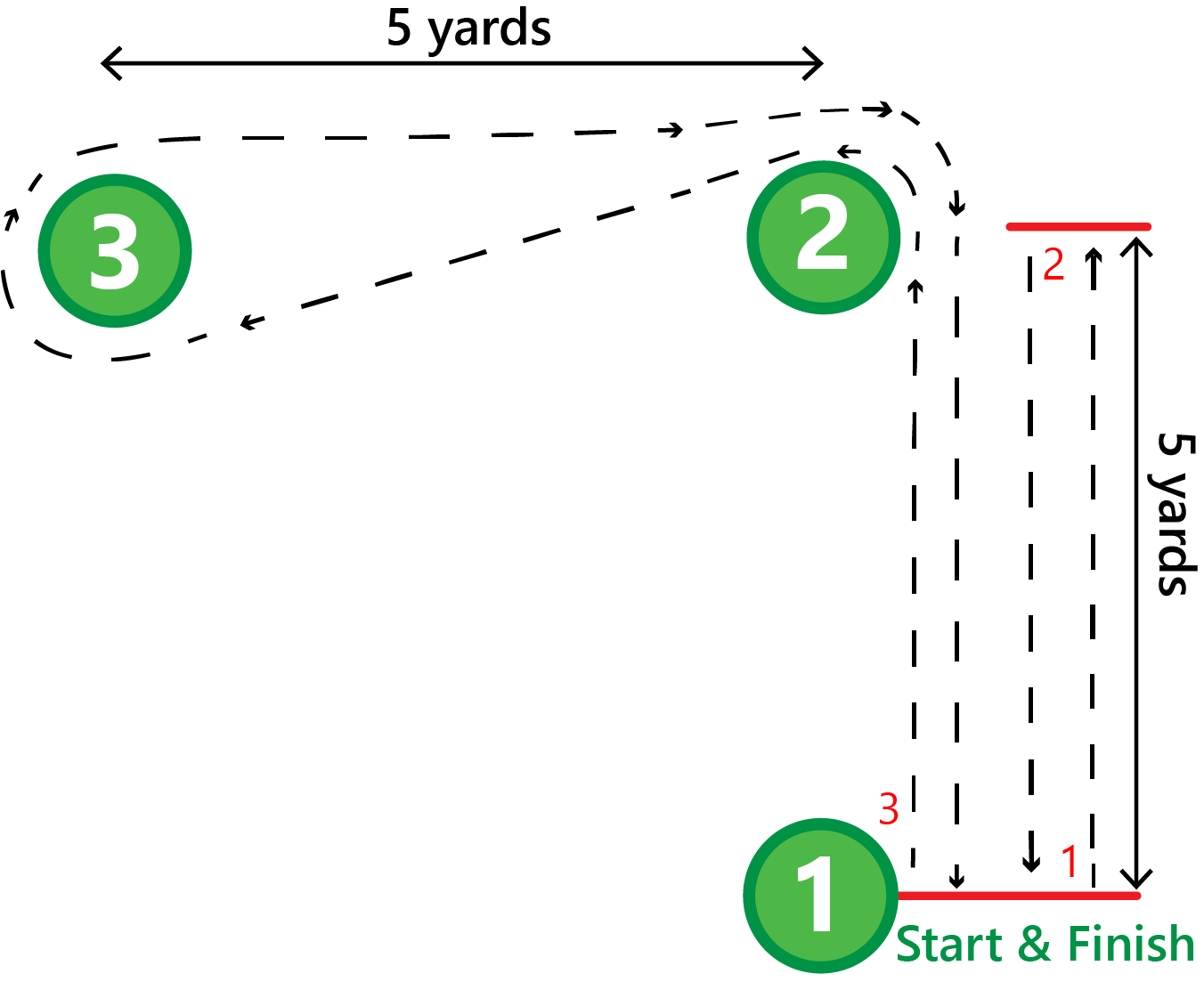
- Three marker cones are placed to form an "L." with cones at the corner and at each end, 5 yards apart (see diagram). The player starts by getting down in a base steal stance (with right foot on the starting line) next to Cone 1. Timing starts on player's first movement. After the commands "Ready, Set, player runs to Cone 2, bends down and touches the line with his right hand. Then he turns and runs back to Cone 1, bends down and touches that line with his left hand. Then he runs back to Cone 2 and around the outside of it, weaves inside Cone 3, then around the outside of Cones 3 and 2 before finishing at Cone 1. The player must run forward while altering his running direction, as opposed to strictly stopping and starting in opposite directions. See 3-cone shuttle drill picture below.
- Control your body! Speed isn't everything in this drill. The ability of an athlete to get in and out of turns quickly will result in a better time.
Measure
This test measures the agility of the athlete, especially body control and change of direction.
Equipment
- Measuring Tape
- Chalk
- Three cones and one small cone.
- Stopwatch
Environment
Preferably on a grass, track, turf.
How to Measure
The athlete runs this drill twice, once in each direction, and his or her best time is recorded to the nearest two decimals (for example, a time of 8.523 should be recorded as 8.52).
Disqualification
L-Drill times are disqualified (not counted) if athlete: (1) fails to touch each line with a hand; (2) starts the shuttle and doesn't complete the shuttle; or (3) touches a cone. Warn athlete after first disqualification and allow athlete to redo.
Testing Protocol
- Stand perpendicular to the start line. Think of yourself standing at the plate in a hitting stance or on the mound in your pitching stance. You may step on or touch the starting line, but no body part may be ahead of the line.
- Cradle the Medicine Ball in two hands with your backhand (palm facing the start line) on the back of the ball and your front hand under the ball.
- Draw the Medicine Ball back, keeping the Medicine Ball between your waist and chest. Your backhand should not come above chest height. Unlike a real batting form, keep your arms fully extended with only a slight bend in your elbows.
- In one fluid motion, with your arms fully extended and supporting the ball, laterally rotate your body as you sling the Medicine Ball out and forward (optimally at a 45 degree angle). As you rotate, your body will simulate a bat swing, beginning with the drop of your front heel and continuing through as you rotate your core from the waist up.
- Finish with your arms extended and high, with the release point tracking as if you were hitting a ball up the middle.
- If the Medicine Ball does not track straight out, adjust your release and follow through just as you would if you had pushed or pulled a hit while batting.
- Following through over the line is acceptable, but your feet should not step in front of the start line, until the Medicine Ball is released.
Measure
In this test, the athlete throws a Medicine Ball across the chest for maximum distance. The rotational throw is an excellent measure of core strength and total body power and simulates the rotational core movement common to baseball.
Equipment
- 6 lbs Medicine Ball (basketball sized)
- Measuring tape
Environment
Preferably on a track, turf, or grass surface that is clean and/or unobstructed.
How to Measure
It is best to perform this test on a soft surface such as grass or turf. Record the point where the Medicine Ball hits the ground closest to the start line. The distance should be measure in feet and rounded to the nearest foot (for example, a throw of 35 feet, 7 inches should be recorded as 36 feet). The athlete makes three throws, with the best attempt recorded.







 Softball
Softball